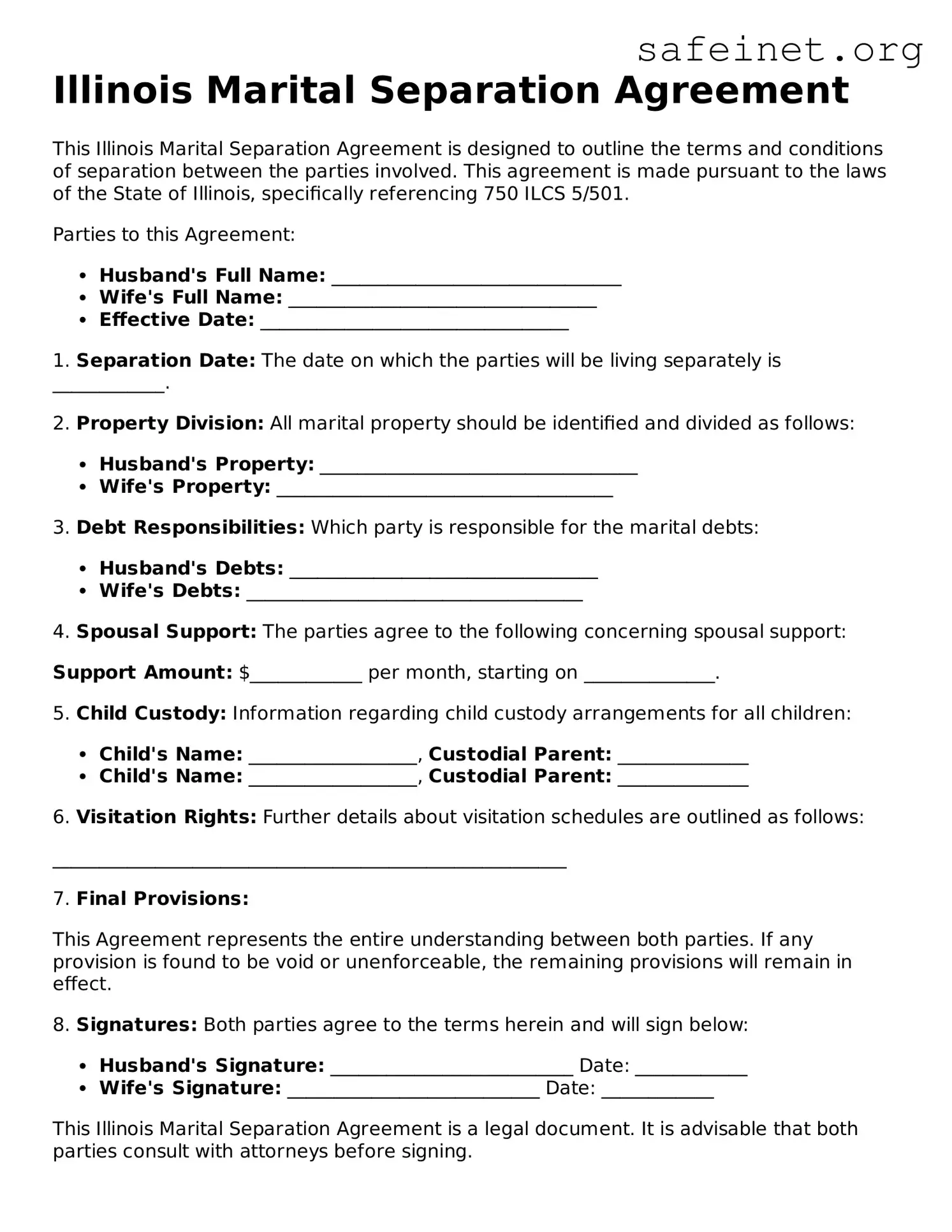Illinois Marital Separation Agreement
This Illinois Marital Separation Agreement is designed to outline the terms and conditions of separation between the parties involved. This agreement is made pursuant to the laws of the State of Illinois, specifically referencing 750 ILCS 5/501.
Parties to this Agreement:
- Husband's Full Name: _______________________________
- Wife's Full Name: _________________________________
- Effective Date: _________________________________
1. Separation Date: The date on which the parties will be living separately is ____________.
2. Property Division: All marital property should be identified and divided as follows:
- Husband's Property: __________________________________
- Wife's Property: ____________________________________
3. Debt Responsibilities: Which party is responsible for the marital debts:
- Husband's Debts: _________________________________
- Wife's Debts: ____________________________________
4. Spousal Support: The parties agree to the following concerning spousal support:
Support Amount: $____________ per month, starting on ______________.
5. Child Custody: Information regarding child custody arrangements for all children:
- Child's Name: __________________, Custodial Parent: ______________
- Child's Name: __________________, Custodial Parent: ______________
6. Visitation Rights: Further details about visitation schedules are outlined as follows:
_______________________________________________________
7. Final Provisions:
This Agreement represents the entire understanding between both parties. If any provision is found to be void or unenforceable, the remaining provisions will remain in effect.
8. Signatures: Both parties agree to the terms herein and will sign below:
- Husband's Signature: __________________________ Date: ____________
- Wife's Signature: ___________________________ Date: ____________
This Illinois Marital Separation Agreement is a legal document. It is advisable that both parties consult with attorneys before signing.
